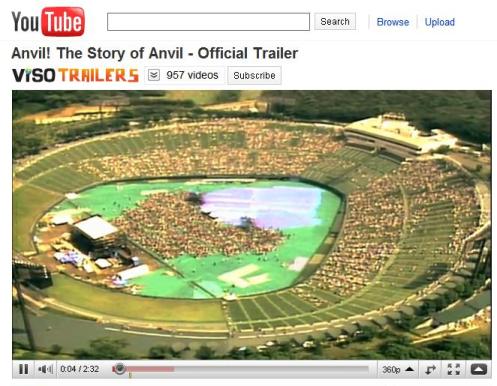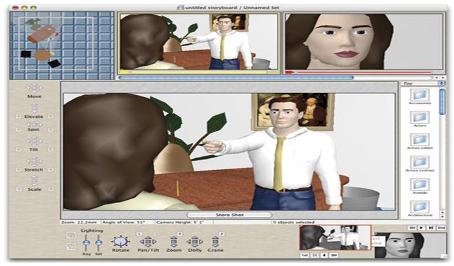Watch Your Back Cannes: Open Source and Social Media Power Indie Films to Go DIY

If last week's 63rd Festival de Cannes were a film, it would be "dark comedy". Buyers, sellers and producers at the world's largest film market were delayed by volcanic ash, chilled by a freak May storm and battered by the near collapse of the European economy. While the stars on the tapis rouge flashed their million dollar smiles, many film makers were lucky to get free baguettes at B-list boat parties.
Although Hollywood scored its best box office in history last year, the independent film sector is in free-fall. Three of the six major studios have shuttered their independent film divisions. In a market where 16 of the 23 highest grossing films last year were sequels, what would happen if film, like other digital information industries, could be produced with open-source tools, delivered as bits and distributed at marginal cost? In the words of legendary film maker and former Honorary President of the Cannes Film Festival Jean Cocteau, "when the cost of making films is as much as a pencil and piece of paper, then we'll find true art." That day may have arrived.
For example, last year Sacha Gervasi self-distributed his documentary "Anvil! The Story of Anvil"
This earned almost $700,000 at the North American box office and garnered "Best Documentary" at the 2010 Independent Spirit Awards. Sites like Distribber (www.distribber.com) or the non-profit Film Collaborative (www.thefilmcollaborative.org), founded by Orly Ravid, provide tools and insights for film makers to find audiences.
Many of the successful self-distribution examples actually use a hybrid distribution strategy, in which sales rights may be retained by the film maker but DVD, VOD, international or other rights are handled by third parties. "The current system is broken", says Jon Reiss, whose book "Think Outside the Box Office" is based on his experience self-distributing his own documentary ("Bomb It") in 2007.
None of this is actually new. The most successful independent filmmaker in history may be George Lucas. 20th Century Fox distributed the first "Star Wars" but Mr. Lucas retained all sequel and merchandising rights. At the time of release, Lucas noted that any profit to him "will be from the toys." The difference for this generation of film makers is the availability of low-cost and open-source tools to lower production costs and efficiently reach audiences.
For example, during pre-production, film makers may use sites like Mandy (www.mandy.com) for casting and Indie GoGo (www.indiegogo.com) for film financing.
According to Kristen Daly, PhD and expert in Digital Cinema, "beyond just image capture and projection, the processes of cinema, starting even in pre-production, are becoming digital." This theme is explored in her chapter about Digital Cinema in the upcoming book "Transitioned Media": http://bit.ly/bDFjVv
One of the more popular tools is Storyboard Composer (www.cinemek.com) from Cinemek, which allows directors to storyboard on their iPhones.
FrameForge 3D (http://www.frameforge3d.com/watch-demo) is a virtual Mise-En-Scene. Used during the pre-visualization stage, directors can explore and experiment with shots, framing, angles and other aspects.
Screenwriting and story development software has also become open-source. Here are some examples:
| Free Screenwriting Software | URL | Details |
| Celtx | http://celtx.com | Open source project for Mac OS X, Microsoft Windows and GNU/Linux. Includes comic book script-writing |
| FiveSprockets | http://www.fivesprockets.com/fs-portal | Online, collaborative story-development and scriptwriting software |
| Page 2 stage | http://www.page2stage.com/index.htm | Open-source software designed specifically for Windows. Available in a variety of languages |
| Scripped and Zhura | http://www.scripped.com | Prowser-based screenwriting text editing software |
| Plotbot | http://www.plotbot.com | Online, browser-based |
| Eleanor | http://eleanor.rubyforge.org | Creates PDF scripts from any text file |
| Adobe Story | https://story.adobe.com/#o | Online collaborative scriptwriting software with offline support (Currently beta) |
Moreover, social media allows film makers to share expertise at no cost. Check out this YouTube video, explaining techniques to simulate blowing someone's head off. This could be great for Bar Mitzvahs:
Long-term, the greatest opportunity for self-distribution may be in the transition to digital exhibition. Today, roughly one in six U.S. screens uses digital projection. The commercial success and higher profit margins of 3D films are encouraging exhibitors to invest in more expensive, IP-connected, digital projection systems. One day, films that previously required expensive print formats with high transportation costs will be accessible to exhibitors with the press of a button. One company prepared for that scenario is UK-based Projector TV (http://projector.tv), aggregating an online VOD library of independent cinema for exhibitors and sales agents. However, the era of DIY VOD in the average household will take more time. In a panel at Cannes, Christian Gaines (IFC) warned that "consumers… are still relatively confused" about new technologies.
The business of independent film has never been easy. Ignored by distributors and marginalized at the Cineplex, a new generation of digitally savvy film makers is learning from the experience of the music and newspaper industries and integrating DIY into their workflow. For its part, this year's Sundance Film Festival in January included a new section devoted to no- and low-budget filmmaking. Meanwhile, amidst the dark comedy at Cannes, a Belgian film maker quoted Beethoven near the end of his life…"Friends applaud, the comedy is over." For traditional film distribution models, it may indeed be the final act.





